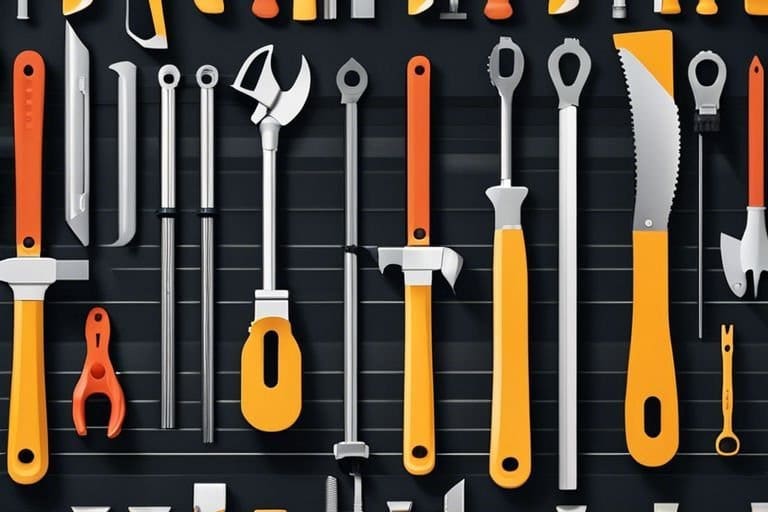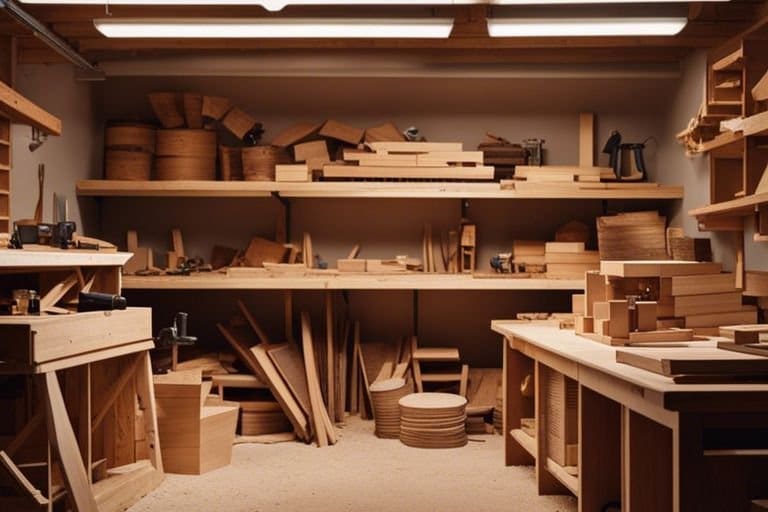There’s nothing quite like the precision and finesse of a Japanese saw when it comes to woodworking. In this informative post, we’ll explore the age-old debate: Do Japanese saws truly offer superior control and smoother cuts compared to their Western counterparts? Get ready to sharpen your knowledge and saw skills as we explore the nuances of these cutting-edge tools – pun intended!
The Anatomy of a Japanese Saw
For a tool as seemingly simple as a saw, the Japanese saw boasts a fascinating anatomy that contributes to its superior control and precision. Let’s break down the key components that make a Japanese saw a cut above the rest.
Blade Design and Materials
Materials play a crucial role in the effectiveness of a Japanese saw. The blades of these saws are typically made from high-quality steel, such as SK-4 or SK-5 steel, known for their durability and ability to retain a sharp edge. The thin kerf design of Japanese saw blades reduces the amount of material that needs to be removed, resulting in more effortless and precise cuts. This design also allows for finer teeth, which are capable of creating incredibly smooth cuts with minimal splintering.
Handle Ergonomics and Balance
Any woodworking enthusiast knows that comfort and control are paramount when working with hand tools. Japanese saws excel in this department with their ergonomic handles designed for maximum comfort and efficiency. The wooden handles are often angled to allow for a more natural and comfortable grip, reducing strain on the hand and wrist during prolonged use. Additionally, the balance of a Japanese saw is finely tuned, allowing for effortless maneuverability and precise cuts with minimal effort.
Anatomy of a Japanese saw is a harmonious blend of form and function, where every component is meticulously designed to enhance the overall cutting experience. From the choice of materials to the handle ergonomics and balance, each aspect is carefully crafted to ensure that using a Japanese saw is not just a task, but an enjoyable and precise woodworking experience.
The Cutting Edge of Control
While many woodworkers debate the superiority of Japanese saws versus Western saws, one undeniable factor is the superior control offered by Japanese saws. Precision cutting is imperative in woodworking, and Japanese saws provide woodworkers with the ability to make intricate cuts with ease and accuracy.
Precision Cutting Techniques
One of the reasons Japanese saws excel in providing superior control is due to their pull-cut design. This unique design allows for a more stable and controlled cut, making it easier to follow a predetermined cutting line. The thin kerf of Japanese saws also reduces the amount of material lost during cutting, resulting in more precise and efficient cuts.
How Japanese Saws Excel in Tight Spaces
Control is key when working in tight spaces, and Japanese saws truly shine in this aspect. Their lightweight and maneuverable design make them perfect for navigating intricate cuts in small or confined areas. Whether you’re working on a detailed joinery project or trimming down a small piece of wood, the control offered by Japanese saws is unmatched.
Tight spaces can be a challenge for many woodworkers, but with a Japanese saw in hand, you can tackle any intricate cutting task with ease. The precise cuts and superior control provided by Japanese saws make them a must-have tool for anyone looking to elevate their woodworking game.
Smooth Cuts: The Secret to Silky Wood
The art of woodworking lies in the ability to create smooth, silky cuts that enhance the beauty of the wood. Achieving this level of finesse requires precision and control, qualities that Japanese saws are renowned for.
The Role of Tooth Angle and Pitch
An necessary factor in creating silky smooth cuts is the tooth angle and pitch of the saw. Japanese saws typically have a much thinner blade with finer teeth compared to Western saws. The thinner blade reduces the amount of material that needs to be removed, resulting in finer cuts with less effort. Additionally, the steep angle of the teeth allows for more precise control and cleaner cuts.
Comparing Western and Japanese Saw Tooth Geometry
Silky smooth cuts are achieved through the specific tooth geometry of the saw. Western saws traditionally have larger, more aggressive teeth designed for rip cuts or crosscuts in thicker wood. In contrast, Japanese saws have smaller, finer teeth that cut on the pull stroke, which results in greater control and finer finishes.
| Western Saws | Japanese Saws |
| Large, aggressive teeth | Finer, smaller teeth |
| Designed for rip or crosscuts | Cuts on the pull stroke |
| Less control and finesse | Precise control for fine finishes |
Comparing the tooth geometry of Western and Japanese saws highlights the distinct differences in their cutting abilities. While Western saws excel in certain applications, Japanese saws offer superior control and finesse, making them ideal for creating silky smooth cuts in woodworking projects.
The Art of Sawing: A Tale of Two Strokes
Not all saws are created equal, and the way you wield them can make all the difference in the quality of your cuts. In the context of the art of sawing, understanding the nuances between push and pull strokes is crucial for achieving precision and control in your woodworking projects.
Push vs. Pull: The Fundamentals of Sawing Styles
Sawing is not just about brute force; it’s about finesse and technique. Western saws, like the classic handsaw, rely on a push stroke to cut through materials. This style of sawing can require more effort and muscle power, as you are pushing the teeth of the saw through the wood. On the other hand, Japanese saws utilize a pull stroke, where the blade is under tension as it cuts. This results in a smoother, more controlled cutting action that allows for greater accuracy and less resistance.
How Japanese Saws Encourage a More Efficient Stroke
Push stroke sawing can lead to inaccuracies and splintering, especially if you’re not careful with your technique. Japanese saws, with their thin, flexible blades and pull stroke design, encourage a more efficient cutting motion. The pull stroke allows for a more natural alignment of the blade with the material, reducing the chances of deflection and ensuring a cleaner cut. This design also puts less strain on your arm and shoulder, making it easier to maintain a steady pace and rhythm while sawing.
To truly master the art of sawing, it’s necessary to understand the strengths and nuances of different sawing styles. Whether you prefer the traditional push stroke of Western saws or the precise pull stroke of Japanese saws, honing your technique and finding the right tool for the job will ultimately lead to smoother cuts and more enjoyable woodworking experiences.
Western Saws: The Competition
The Strengths and Weaknesses of Western Saw Designs
Weaknesses in Western saw designs mainly stem from their heavier build and the way they cut. While sturdy and durable, Western saws can be cumbersome to maneuver, particularly in intricate cuts or when working on delicate projects requiring finer control. The aggressive cutting action of Western saw teeth can also result in rough cuts that may require additional sanding and finishing to achieve a smooth surface.
Where Western Saws Fall Short in Control and Smoothness
Western saws fall short in providing the level of refined control and smooth cuts that Japanese saws excel at. The larger size and weight of Western saws can make them challenging to use for detailed work, such as intricate joinery or fine carpentry. Additionally, the tendency of Western saws to produce more sawdust and create rougher edges can be a drawback when precision and a clean finish are paramount.
For instance, when making a precision cut in a thin piece of wood, a Western saw may struggle to maintain the necessary level of accuracy due to its aggressive cutting nature. This can lead to splintering or tearing of the wood fibers, resulting in a less precise cut compared to the clean lines achievable with a Japanese saw.
Putting Japanese Saws to the Test
All right, it’s time to roll up our flannel sleeves and put these Japanese saws to the test. We’re entering into the world of woodworking with the precision tools of the East to see if they truly offer the superior control and smooth cuts they are renowned for. Strap in, folks, we’re about to commence on a sawdust-filled adventure!
Hands-on Experience with Different Japanese Saw Brands
One of the joys of woodworking is getting to try out different tools and see how they handle. In our quest for the ultimate saw, we tested various Japanese saw brands. From the traditional Dozuki to the versatile Ryoba, each saw brought its own unique flair to the woodshop. The ergonomic designs and razor-sharp blades made cutting through timber feel more like slicing through butter. It’s woodworking magic, my friends!
Real-World Applications and Results
Real-world testing is where the rubber meets the road, or should I say, where the blade meets the wood. We took these Japanese saws out for a spin on a variety of projects, from crafting delicate joints to cutting precise angles. The results? Let’s just say we were left in awe. The control and finesse these saws offered were unmatched, delivering clean cuts that would make any carpenter proud. Whether you’re a seasoned woodworker or a newbie DIY enthusiast, these saws are sure to elevate your woodworking game to a whole new level.
Results
Summing up
So, does a Japanese saw really offer superior control and smooth cuts compared to Western saws? The answer is a resounding “yes”! With its finer teeth, thinner blade, and pull-stroke action, the Japanese saw provides woodworkers with precision and control that is hard to beat. While Western saws have their own strengths, there’s no denying the finesse and smooth cuts that a Japanese saw can offer. So, if you’re looking to elevate your woodworking game and add a touch of Japanese craftsmanship to your projects, investing in a Japanese saw might just be the perfect move for you. Happy sawing!




